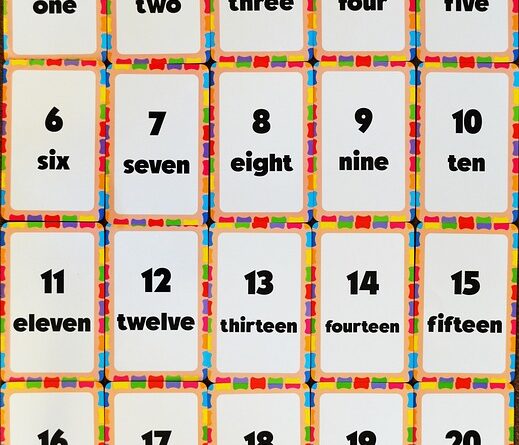
Have you ever wondered how to say goodbye in different languages? It’s always interesting to learn a few phrases in different languages, especially when it comes to saying goodbye. Whether you’re traveling to a new country or just want to impress your friends with your language skills, knowing how to say goodbye in different languages can come in handy. In this article, we’ll explore how to say goodbye in various languages from around the world. So, get ready to expand your linguistic horizons!
In this article, we’ll dive into the fascinating world of various languages and explore how different cultures bid farewell. We’ll start with some commonly spoken languages such as Spanish, French, and German. You’ll also learn how to say goodbye in less commonly known languages, like Swahili, Thai, and Hawaiian. From simple phrases to more complex expressions, we’ll cover it all! So, whether you’re planning a trip to a foreign country or simply curious about different cultures, this article will provide you with the knowledge you need to say goodbye in various languages. Get ready to impress your friends and become a polyglot in no time!

Table of Contents
Overview
Saying goodbye is a common and important part of human interaction. Whether it’s bidding farewell to a friend or colleague, expressing gratitude to a loved one, or simply ending a conversation, knowing how to say goodbye in different languages and cultures can enhance our connections and understanding with others. In this article, we will explore the importance and cultural significance of saying goodbye, learn common farewell phrases in various languages, discuss regional expressions, traditional customs, informal and formal phrases, unique and untranslatable expressions, and explore how to say goodbye in different situations. So, let’s dive in!
The Importance of Saying Goodbye
Saying goodbye is more than just a formality; it is a way of showing respect and acknowledging the end of a conversation, relationship, or encounter. By saying goodbye, we create closure and allow for a smooth transition to the next interaction or phase in our lives. It helps maintain healthy relationships and leaves a positive impression on others. Whether it is a simple “bye” or a heartfelt farewell, the act of saying goodbye is essential for effective communication and building meaningful connections.
The Cultural Significance of Saying Goodbye
While saying goodbye may seem like a universal concept, the way it is expressed varies across cultures. Different languages have their own unique phrases and customs that are used to bid farewell. These expressions reflect the traditions, customs, and values of a particular society. Learning how to say goodbye in different languages not only showcases our cultural awareness but also demonstrates our willingness to connect with people from diverse backgrounds. It is a way of embracing the richness of human diversity and fostering cross-cultural understanding.
Common Farewell Phrases
Goodbye in English
In the English language, “goodbye” is the most commonly used farewell phrase. It is derived from the phrase “God be with you” and has been in use since the 16th century. It is a versatile phrase that can be used in both formal and informal settings.
Adios in Spanish
In Spanish, “adios” is the equivalent of “goodbye.” It is a more formal way of bidding farewell and is often used when parting with someone for a longer duration.
Au revoir in French
The French expression “au revoir” translates to “until we meet again.” It is a polite way of saying goodbye and is commonly used in France and other French-speaking regions.
Auf Wiedersehen in German
In German, “auf Wiedersehen” means “goodbye.” It is a formal expression used when parting with someone for an extended period or when there is uncertainty about when you will meet again.
Ciao in Italian
Italian speakers commonly use the word “ciao” when saying goodbye. It can be used in both formal and informal situations and is an all-purpose farewell expression.
Sayonara in Japanese
The Japanese word “sayonara” is widely recognized as a way of saying goodbye. It is often used when parting on a long-term or permanent basis.
Zaijian in Chinese
In Mandarin Chinese, “zaijian” is the standard way of saying goodbye. It translates to “see you again” and is used in both formal and informal settings.
Namaste in Hindi
In the Hindi language, “namaste” is a common farewell phrase. It is usually accompanied by a slight bow and both hands pressed together in front of the chest. It is a respectful way of bidding goodbye.

Regional Farewell Expressions
In addition to the common farewell phrases, different regions within the same language may have their own unique expressions. These regional expressions add flavor and variety to the way we say goodbye. Let’s explore some of these regional expressions:
Hasta luego in Spanish-speaking regions
In Spanish-speaking regions, people often use “hasta luego” to say goodbye. It translates to “until later” and implies the expectation of meeting again in the near future.
A bientot in French-speaking regions
French-speaking regions frequently use the phrase “a bientot” as a way of saying goodbye. It means “see you soon” and conveys the hope of a future encounter.
Tschüss in German-speaking regions
In German-speaking regions, “tschüss” is a common farewell expression. It is an informal way of saying goodbye, similar to the English “bye.”
Arrivederci in Italian-speaking regions
Italian-speaking regions often use “arrivederci” to bid farewell. It means “until we see each other again” and is a more formal way of saying goodbye.
Jaa ne in Japanese-speaking regions
In Japanese-speaking regions, people commonly use “jaa ne” to say goodbye. It is a casual way of bidding farewell, usually used among friends.
Zàijiàn in Chinese-speaking regions
While “zaijian” is the standard way of saying goodbye in Mandarin Chinese, different regions within China might use local dialects or variations to bid farewell.
Alvida in Hindi-speaking regions
In Hindi-speaking regions, “alvida” is often used to say goodbye. It means “farewell” and is usually used when parting ways for an extended period or on a more formal note.
Traditional Farewell Customs
Beyond the words we use to say goodbye, different cultures also have traditional customs associated with farewells. These customs vary from handshakes and hugs to gift exchanges and saying prayers. Let’s explore some of these traditional farewell customs:
Handshakes and Hugs
In many Western cultures, handshakes are a common form of parting gesture while saying goodbye. It is a sign of respect and acknowledgment. On the other hand, hugging is a more intimate form of farewell commonly observed among close friends and family members.
Kissing on the Cheek
In some cultures, such as parts of Europe and Latin America, kissing on the cheek is a customary way of saying goodbye. The number of kisses and the cheek chosen for kissing can vary depending on the region.
Bowing and Wai
In Asian cultures, such as Japan and Thailand, bowing and performing the “wai” are traditional ways of saying goodbye. These gestures show respect and are deeply rooted in their cultural traditions.
Gift Exchange
In certain cultures, exchanging gifts is a common practice when bidding farewell. It serves as a token of appreciation and well wishes for the person leaving.
Saying a Prayer
In religiously inclined cultures, saying a prayer or offering a blessing before saying goodbye is considered an important farewell custom. It is a way of seeking blessings and protection for the person embarking on a journey or starting a new chapter in life.
Informal Farewell Words
While formal farewell phrases are appropriate for professional settings or more serious occasions, informal farewell words are commonly used amongst friends and acquaintances. These casual expressions reflect a more relaxed and friendly tone. Here are some examples:
Bye
“Bye” is perhaps the most universally recognized informal farewell word. It is short, simple, and can be used in any informal setting.
See ya
“See ya” is an informal way of saying goodbye and is commonly used among friends. It is a shortened form of “see you” and indicates a casual farewell.
Later
“Later” is another casual way of saying goodbye. It implies that the person will see you again at a later time or date.
Take care
“Take care” is an expression used to bid farewell while conveying a sense of concern for the other person’s well-being. It is a friendly and caring way of saying goodbye.
Catch you later
Similar to “see ya,” “catch you later” is a casual expression used among friends. It implies that you will meet or talk again sometime in the future.
Peace out
“Peace out” is a more modern and informal way of saying goodbye. It originated from hip-hop culture and conveys a sense of coolness and tranquility.
Formal Farewell Phrases
In formal settings, such as professional environments or when bidding farewell to someone you may not know well, it is important to use more formal expressions. These phrases convey professionalism and respect. Here are some examples:
Farewell
“Farewell” is a neutral and formal way of bidding goodbye. It is often used in professional settings or when parting with someone you may not have a close relationship with.
Wishing you all the best
“Wishing you all the best” is an expression used to convey well wishes and good luck to someone. It is a polite and formal way of saying goodbye.
Goodbye and good luck
“Goodbye and good luck” is a straightforward way of bidding farewell while wishing the other person success in their future endeavors. It is a professional and courteous expression.
Take care and goodbye
“Take care and goodbye” is a combination of a friendly sentiment and a formal farewell. It conveys a sense of concern for the other person’s well-being while maintaining a professional tone.
May our paths cross again
“May our paths cross again” is a slightly more poetic way of saying goodbye. It implies the hope of meeting the other person again in the future and maintains a sense of positivity.
Unique and Untranslatable Farewell Expressions
Some farewell expressions are unique to specific languages or cultures and do not have a direct translation in other languages. These expressions often carry deeper meanings or convey cultural values. Here are a few examples:
Aloha in Hawaiian
“Aloha” is commonly used as both a greeting and a farewell in Hawaiian culture. It represents the spirit of love, peace, and compassion.
Sampai jumpa in Indonesian
In Indonesian, “sampai jumpa” means “until we meet again.” It is used as a farewell expression and signifies the expectation of a future reunion.
Addio in Italian
Italian speakers use “addio” as a more formal and final goodbye. It is often used when parting ways indefinitely or on a permanent basis.
Adieu in French
Similar to “addio” in Italian, “adieu” in French is used to bid farewell when there is an expectation of not seeing the person again in the future.
Ma’a as-salaama in Arabic
“Ma’a as-salaama” is a common way of saying goodbye in Arabic. It translates to “go with peace” and reflects the value of peace and harmony in Arabic-speaking cultures.
Saying Goodbye in Different Situations
Saying goodbye can vary depending on the situation and the relationship between individuals. Here are some ways to say goodbye in different scenarios:
Saying Goodbye to Friends
When bidding farewell to friends, informal expressions like “bye,” “see ya,” or “catch you later” are appropriate. You can also add a personal touch by saying something like “It was great hanging out with you, see you soon!”
Saying Goodbye to Colleagues
In professional settings when saying goodbye to colleagues, it is important to maintain a formal tone. Phrases like “farewell,” “goodbye and good luck in your future endeavors,” or “thank you for your contributions” are suitable.
Saying Goodbye to Family
When parting ways with family members, especially for longer periods, it is common to express love and affection. Expressions like “take care,” “stay safe,” or “I’ll miss you” are appropriate in these situations.
Saying Goodbye on a Trip
When going on a trip, expressions like “have a safe journey,” “enjoy your trip,” or “see you when you get back” are commonly used. It is important to wish the person well and acknowledge their upcoming adventure.
Saying Goodbye at a Funeral
When attending a funeral, expressions of condolences and comfort are more appropriate than traditional farewell phrases. Phrases like “I’m sorry for your loss,” “my thoughts are with you,” or “may their soul rest in peace” are commonly used.
Emotional Farewells
Saying goodbye can often be an emotional experience, especially when parting ways with loved ones or reflecting on life-changing journeys. In such situations, expressing your emotions, gratitude, and memories can help in the farewell process.
Parting Words
Whether it’s a simple “goodbye” or a heartfelt “until we meet again,” parting words carry significance. They leave a lasting impression and can strengthen the bond between individuals.
Expressing Gratitude
Saying thank you and expressing gratitude towards someone before bidding farewell is a thoughtful gesture. It shows appreciation and leaves a positive impact.
Sharing Memories
Recalling shared memories and experiences can be a comforting way of saying goodbye. It strengthens the connection between individuals and allows for reflection on the time spent together.
Reflecting on the Journey
During farewells, it can be insightful to reflect on the journey and growth experienced. By acknowledging the lessons learned and personal development, farewells can become more meaningful and positive.
Conclusion
Saying goodbye may seem like a simple act, but it carries great significance in our interactions and relationships. Learning how to say goodbye in different languages and understanding the cultural nuances behind these expressions enhances our ability to connect with others on a global scale. Whether it’s using a common farewell phrase or expressing emotions in a heartfelt goodbye, the act of bidding farewell allows us to close one chapter and open another. So, embrace the beauty of diverse farewell expressions, respect and honor the cultural significance behind them, and always remember the universal need for connection and closure in our lives. Goodbye, my friend, until we meet again!







